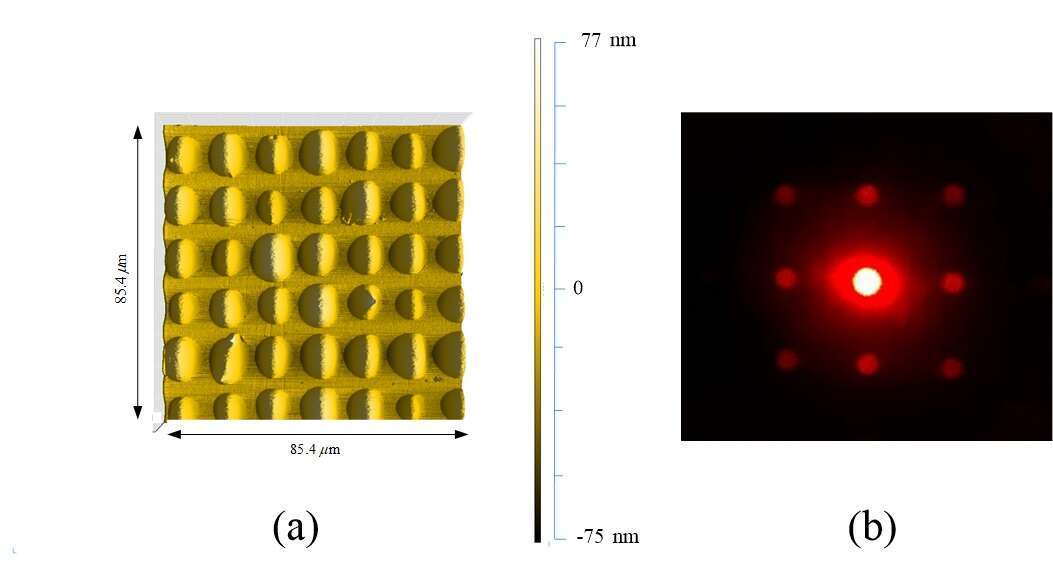
Phase mask fabrication by dip-pen nanolithography
PHASE MASK FABRICATION BY DIP-PEN NANOLITHOGRAPHY
Zeev Fradkin, Marcos Roitman, Moshe Zohar, Gregory Samelsohn
Department of Electrical and Electronics Engineering, Shamoon College of Engineering, Israel
Dip-pen nanolithography (DPN) is a low-cost bench-top versatile technology for directly patterning materials over surfaces. Prototypes of 2D optical grating nanostructures based on polymers were manufactured using DPN to fabricate Phase Masks [1].
Grating interferometers have become a very important tool in phase-contrast and dark-field (scattering) imaging techniques. Typical setups include one-grating (Talbot) and two-gratings (Talbot-Lau) interferometers, with either grating-before-sample (GbS) or sample-before-grating (SbG) configurations. Currently, most existing experimental systems use 1D gratings. Obviously, 2D gratings are more promising for imaging arbitrary shape objects. Some results obtained with 2D grating interferometers have recently been reported [2]. In addition, diffraction gratings with specialized structures may be efficiently used in a single-shot regime for dark-field imaging [3].
Figure 1 (a) shows a 3D AFM image of the 2D transmission grating pattern printed on an epoxy slide glass, with 11 µm dots diameter, 13.2 µm pitch, 1500 µm X 1500 µm surface area and 110 nm dots peak height. Figure 1 (b) shows the resulting experimental transmission and reflection diffractive pattern of the grating depicted on Figure 1 (a).
The knowledge gained from this research contributes to improving the fabrication process of optical structures by DPN.

[1] M. Zohar, Z. Fradkin, E. Rimon, H. Efraim, M. Auslender and M. Roitman, “Solar cell efficiency improvement using dip-pen nanolithography,” J. Photon. Energy, vol. 8, 022503, 2017.
[2] I. Zanette, T. Weitkamp, T. Donath, S. Rutishauser, and D. Christian,”Two-Dimensional X-Ray Grating Interferometer,” Phys. Rev. Lett., vol. 105, p. 248102, 2010.
[3] M. Kagias, Z. Wang, P. Villanueva-Perez, K. Jefimovs, and M. Stampanoni, “2D-Omnidirectional Hard-X-Ray Scattering Sensitivity in a Single Shot,” Phys. Rev. Lett., vol. 116, p. 093902, 2016.
Powered by Eventact EMS